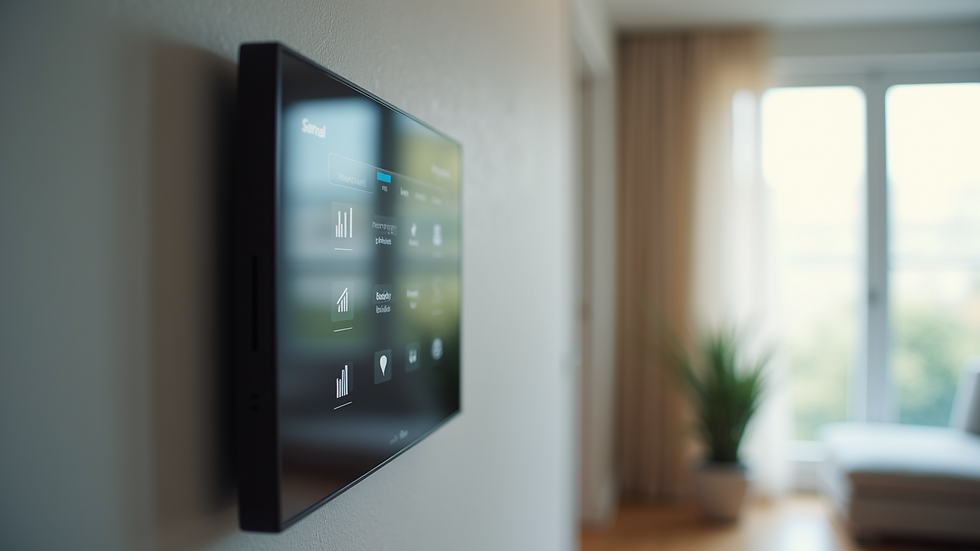Enhancing Safety: Top Strategies to Prevent Falls in Seniors
- smita mahale

- Jul 14
- 4 min read
Falls can have serious consequences for seniors, leading to injuries, loss of independence, and decreased quality of life. Understanding the underlying causes and implementing effective fall risk prevention strategies can help safeguard our elderly loved ones. This comprehensive guide provides actionable insights and recommendations to enhance safety and minimize fall risks.
Understanding Fall Risk Prevention
Fall risk prevention involves taking proactive steps to reduce the likelihood of falls in seniors. By identifying potential hazards in their environment and promoting healthy practices, caregivers and families can help create a safer living space. Some of the key areas to focus on include home safety, physical health, and awareness of risk factors.

In the United States, over 36 million falls are reported among older adults each year, according to the National Council on Aging. Many of these incidents can be prevented through simple modifications and lifestyle changes. Let's explore some top strategies to prevent falls in seniors and foster their independence and well-being.
Home Modifications for Safety
One of the most effective ways to enhance safety for seniors is to modify their living environment. Here are several home modifications to consider:
1. Remove Clutter and Hazards
Ensuring that the home is free from clutter, such as loose rugs, electrical cords, and unnecessary furniture, can drastically reduce fall risks. Encourage seniors to keep walkways clear and to use storage solutions that are easily accessible.
2. Improve Lighting
Poor lighting is a common issue that can lead to falls. Make sure that all rooms, hallways, and staircases are well-lit. Consider adding nightlights in bedrooms and bathrooms to help seniors navigate safely during the night.
3. Install Grab Bars and Handrails
Strategically placing grab bars in bathrooms and handrails on staircases can provide seniors with stability as they move around. These additions can be lifesavers, particularly in areas where slips and trips are more common, like bathrooms and staircases.

Physical Health and Wellness
In addition to modifying the home, it's essential to focus on the physical well-being of seniors. Encouraging an active lifestyle can help improve strength, balance, and coordination.
4. Encourage Regular Exercise
Regular physical activity is vital in maintaining strength and flexibility, which can help prevent falls. Activities like yoga, tai chi, and resistance training improve balance and strengthen muscles. Consider enrolling your elderly loved ones in community exercise programs designed for seniors.
5. Schedule Regular Vision and Medication Check-ups
Vision problems can significantly contribute to falls. Regular eye exams can help detect issues early and ensure that seniors are using the appropriate eyewear. Additionally, reviewing medications with a healthcare provider can help identify any side effects or interactions that may increase the risk of falling.
Why Does My Elderly Mom Keep Falling?
It can be distressing to watch a loved one experience falls repeatedly. Understanding the underlying causes can provide insights into appropriate interventions. Some common factors that contribute to repeated falls include:
6. Health Conditions
Various health issues, such as osteoporosis, Parkinson's disease, or arthritis, can increase fall risk. Discussing these medical conditions with a healthcare professional can help in creating a tailored prevention plan.
7. Cognitive Decline
Dementia, Alzheimer’s disease, or other cognitive impairments can affect a senior’s awareness of their environment and increase fall risk. Monitoring changes in mental health and ensuring a safe living environment are crucial steps to take.

Community and Social Support
Creating a strong support system can play a crucial role in preventing falls. Seniors who are isolated or lack social interactions are more likely to experience health declines.
8. Foster Social Connections
Encourage seniors to participate in community events, clubs, or classes that interest them. This interaction can boost their mental well-being and decrease feelings of loneliness, which can impact physical health.
9. Utilize Technology
Technology can be a wonderful support tool. Consider using wearable devices that monitor physical activity and alert caregivers in case of a fall. Additionally, simple apps can remind seniors to take medications and schedule their exercise routines.
Continuing Education and Awareness Strategies
Being informed and aware of fall prevention strategies is critical for both seniors and their caregivers.
10. Educate Caregivers
Providing training and resources for caregivers can empower them to effectively support the elderly in fall prevention. This includes learning about proper lifting techniques, understanding fall risk factors, and encouraging regular communication with healthcare providers.
11. Involve Family Members
Encourage family members to be vigilant and involved in the care of elderly loved ones. Regularly discussing health, mobility, and safety concerns can significantly impact a senior’s quality of life.
Final Thoughts on Fall Prevention
Preventing falls in elderly individuals requires a multifaceted approach that addresses home safety, physical health, and social support. By implementing the strategies outlined above, families can create safer living environments and promote the overall well-being of their loved ones. Remember, it's not just about making modifications—it's about fostering a lifestyle that prioritizes safety and health. Consider sharing insights from this blog with fellow caregivers and families to spread awareness about the importance of fall risk prevention.
By taking these proactive steps, we can help our elderly loved ones maintain their independence and enhance their safety in daily life.
Remember, awareness is the first step towards safety, so stay informed and engaged!



Comments